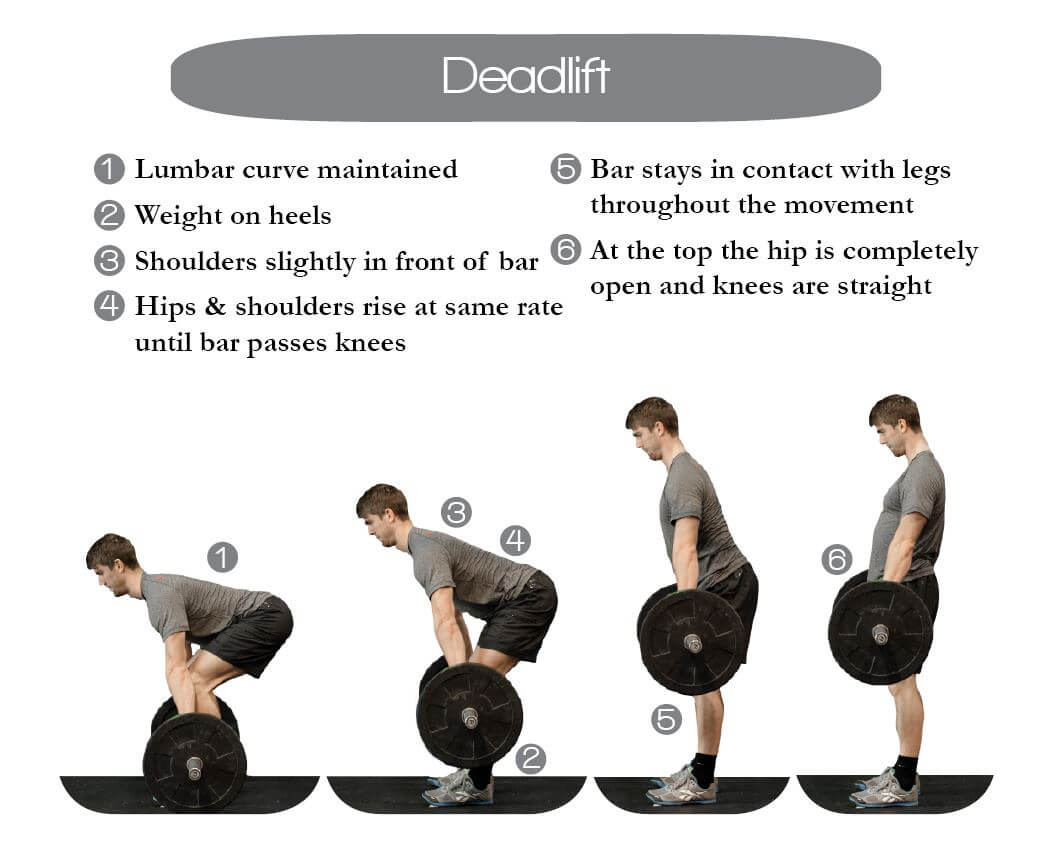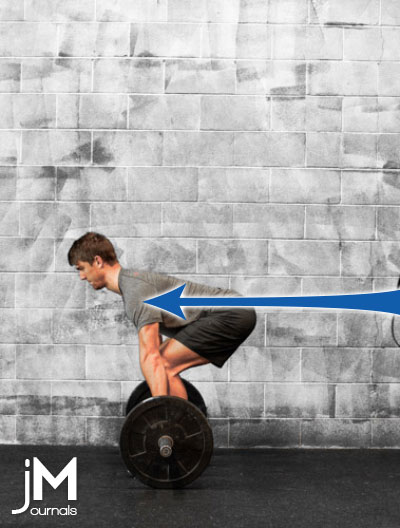Why Deadlift?
The deadlift is one of the most useful and powerful tools of an athlete trying to improve their overall strength. The deadlift does this by working almost every muscle in the body in by lifting a weight from the ground to the waist. The reason why this is so functional is that it uses the largest muscle groups around the hips to act dynamically while every other muscle group is in a static hold in order to keep the weight on the right path.
One important thing I’d like to say is we all have different bodies, body types, and backgrounds, what works for me may not work for you and if you’re just starting out, you should have a coach or medical professional get you started. You should also track your progress, coach notes, PRs, and workouts in a WOD journal. That being said, this is how I deadlift.
The Perfect Workout Journal
You Can Pick Your Pages, Design Your Cover And Definitely Rock Your Workouts!
Useful Triggers
There are a few things you need to perform correctly in order to get the deadlift right. We’re going to talk about these before we talk about the whole movement because I want to preload your brain with some good information and triggers. You can checkout the deadlift gif series above showing proper deadlift technique from a Reebok CrossFit One athlete. As you learn the triggers below, see ifyou can spot them in the gif series above.
The big ideas are you’re keeping your knees out, maintaining a flat back and creating powerful hips. This is obviously an oversimplification because, at the limits of your deadlift ability, all sorts of things can go wrong, but by thinking about these key concepts and triggers, you can get most of the way to a highly functional deadlift. You can use these verbal and visual triggers to help achieve proper technique and avoid injury.
Knees Out
Let’s talk about knees out. Especially when we’re starting out and at the limits of our ability on the deadlift, our knees have a tendency to cave in, either because a muscle group is not as trained or we’ve worked that pattern though bad technique practice. When properly performing a deadlift, you want your knees to be tracking over or slightly outside of your toes. Not only does this allow the hips to open better, but by saying and feeling ‘knees out’ you get a nice visceral sense of engaged quads and you’re much less likely to have your knees cave at any point in the lift. Just remember knees out.
Flat Back (Chest Up)
Another good trigger is ‘flat back,’ although this is one can be interchanged with ‘chest up’ because that is more of an action you can take to achieve proper form. The important thing about keeping your back flat and chest up is that a back that is rounding is a back that is much closer to failure. You can think of your back having a certain amount of leeway with the amount of round it can take before putting undue strain on your spine. If you start rounded then you give up that leeway from the beginning, and if you are lifting heavy, then you are much closer to a potential injury. By focusing on keeping your chest up, your back will naturally flatten out and you will be much more likely to have the right form.
Hips (Butt back)
Hips are the main drivers of the deadlift, but a lot of us are far more quad dominant than we should be and it takes a little while to obtain the skill and strength to properly use your hips and posterior chain. The trigger ‘hips’ or ‘butt back’ indicates that you need to push more with the hips than the quads. By shifting your butt back, you automatically shift your weight more into your hamstrings, hips and posterior chain. This has the nice effect of saving your knees, giving you more power, and taking the strain off your lower back. Staying back and really using your hips to drive the movement is one of the best indicators of a functional deadlift.
Create Yourself a Proper Journal to Track your Deadlift Improvement
Doing a proper deadlift with good technique: Setup and Execution
Setting up my deadlift
When I perform the deadlift I load up the bar with my warmup or working weight, make sure it’s in a stable position, then position my feet underneath it with the bar directly over the top of my foot. From here I bend over with straight legs to grab the bar, then using the weight of the bar as a lever, straighten out my back and push my butt back and down. This also has the effect of bending my knees, and I let them bend until they meet the bar. One thing that is pretty important, you want your head and neck to be in line with your torso, not looking up or looking too far down. I achieve this by maintaining a neutral gaze and looking about 6 feet in front of me although this is a moment when its good to have a coach or camera to tell you what you actually look like.
Doing my deadlift
From here I maintain my flat back, check to make sure my feet are fully flat against the ground (if you can wiggle your toes you are good), push a little to get tension on the bar. To perform the deadlift I push through my heels and stand up. By pushing through my heels I’m activating my posterior chain and making sure to use my hips. My knees straighten out and my hips and shoulders rise at the same rate, maintaining their angle to the ground until the bar passes my knees at which point my hips thrust forward until they are in line with the rest of my body (ears, shoulders, hips, knees, ankles). I should be standing right now, and if not, something has gone wrong and I’m lying flat on my back.
In order to set the weight down, you have to reverse the order of movements, send your hips back until the weight passes your knees then hips and shoulders drop at the same rate until the weight hits the ground. If the weight is ridiculously heavy for you and you have control of the bar, drop it straight down to avoid the concentric movement.
How to know if you’re doing the deadlift wrong
- If you find yourself on your toes, you’re doing it wrong, your knees are too far forward and you’re probably not using your hamstrings or butt at all. Stop that, keep those knees back.
- If your knees are touching, yikes, please stop that and focus on keeping them out. Use a band or your hands to get a sense of what pushing your knees out feels like.
- Don’t lean back after you’ve stood up, there’s no need to and you’re drawing your body out of its strongest line. Chill out, overachiever!
- Make sure you line up the bar close enough to you that you’re not trying to pull it into an S, that’s just bad leverage. Get it close.
- Double-check the weights are the same on both sides of the bar. If you have 3 45lb plates on one side and 2 on the other, you’re in for an unpleasant surprise.
Recovery and self-care
It’s important to realize that the deadlift works your whole body, hard, and if you’re not careful you can get hurt. This includes being careful after the movement is done and you’re bragging to your friends about lifting 2 times your body weight. Those overworked muscles need to be cooled down, stretched out, mobilized and massaged so they don’t develop knots as they rebuild. Foam roll, self-massage, do yoga but know that the deadlift, especially at your extremes, is a very effective exercise at making you sore.
Another thing to note is the deadlift can tear up your hands. Chalk helps, so does squeezing down the bunched up layers of skin and shaving calluses before they become big enough to tear. Using a mixed grip can stop the bar from rolling and slipping but you should warm it up with your lower weight sets so you’re not putting your max loads on an unprepared bicep.
Alright, that’s how I do it, and maybe how you should do it, get after it. And don’t forget:
Track your deadlift PRs in a workout journal.
Seriously though, we make sweet journals
You can Pick your Pages, Design Your Cover and definitely Rock Your Workouts!






